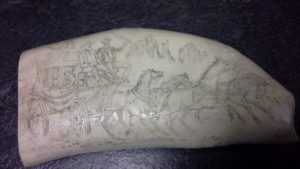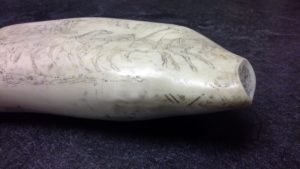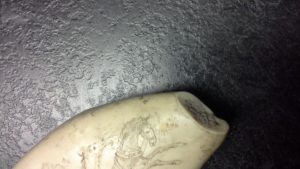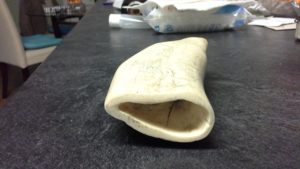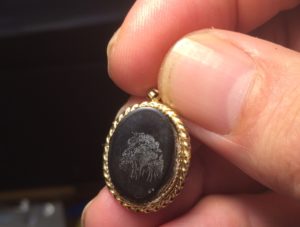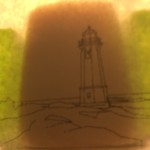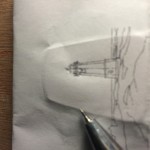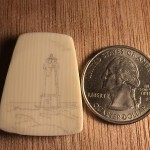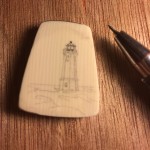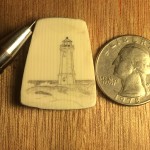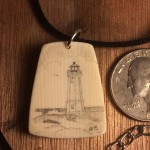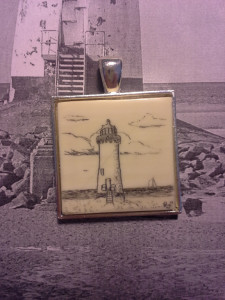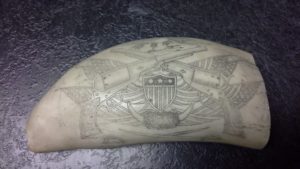 Mystery Artist # 26 is a scrimshaw on a whale tooth, either real or a very good reproduction. From the owner: “Hello, not sure what I have here, as it is somewhat similar to the Turnage Place Mississippi repros. Anyone’s help is much appreciated, thanks Kelvin.”
Mystery Artist # 26 is a scrimshaw on a whale tooth, either real or a very good reproduction. From the owner: “Hello, not sure what I have here, as it is somewhat similar to the Turnage Place Mississippi repros. Anyone’s help is much appreciated, thanks Kelvin.”
One thing I’ve noticed is the uniformity of the color beneath. There is also no grain in the bottom, which makes me think that it could be a polymer. Two quick tests would be looking at it under a “black light”: if it glows, it’s definitely plastic. if not, it could still be a different polymer. The second test would be the “hot pin test”: heating a needle to red hot and pressing the point into the base to see if it melts or burns, taking note of the smell. If it smells like plastic, it is. If it smells like a dentist’s office after a day of drilling, it’s more than likely ivory.
Anyone know the artist or the authenticity of this item? Let us know in the comments.
Douglass Moody, a longtime scrimshaw collector responded below, reprinting his response here:
“This is a well-documented, mass-produced resin replica of a scrimshawed whale tooth, colloquially known as Fakeshaw. It is NOT a reproduction, because an authentic original never existed.”
Thank you, Douglass!


